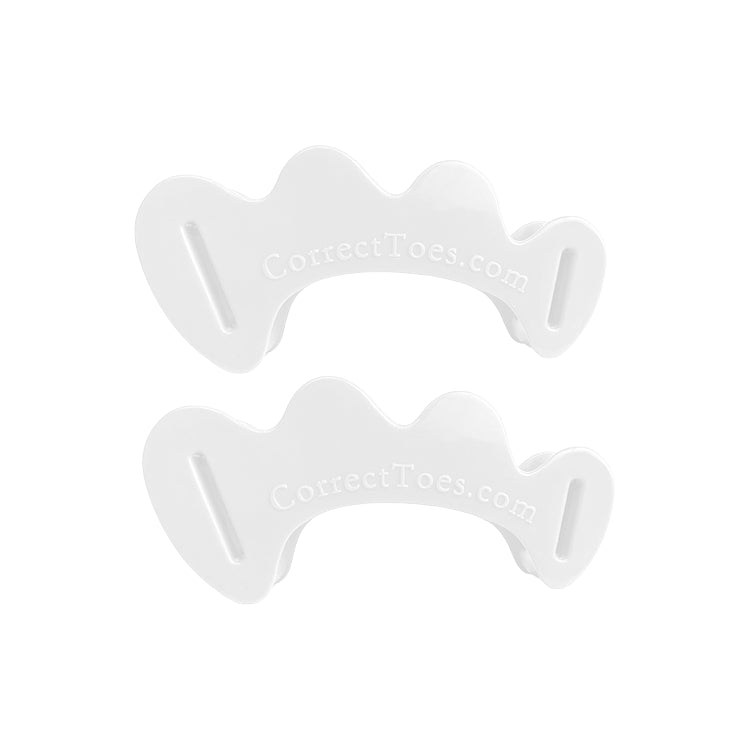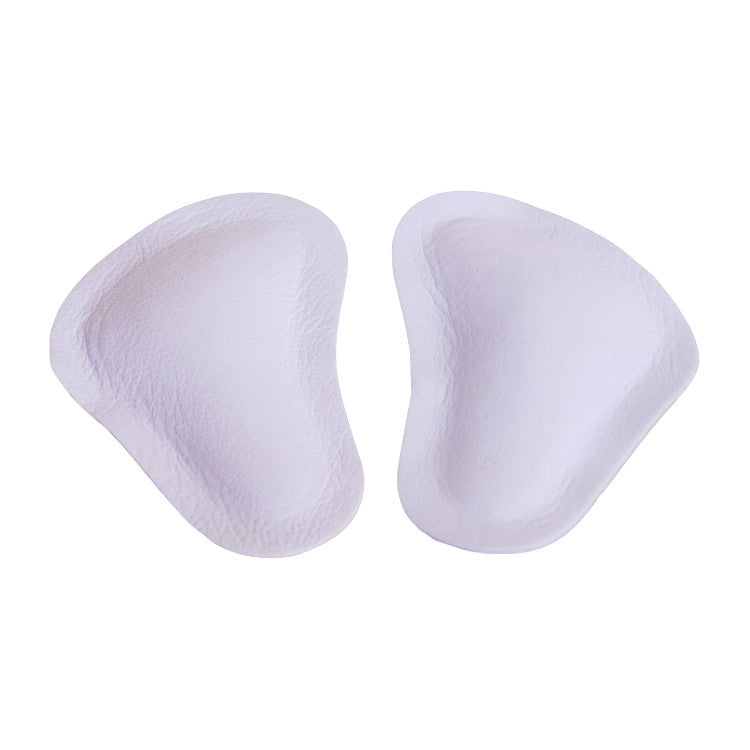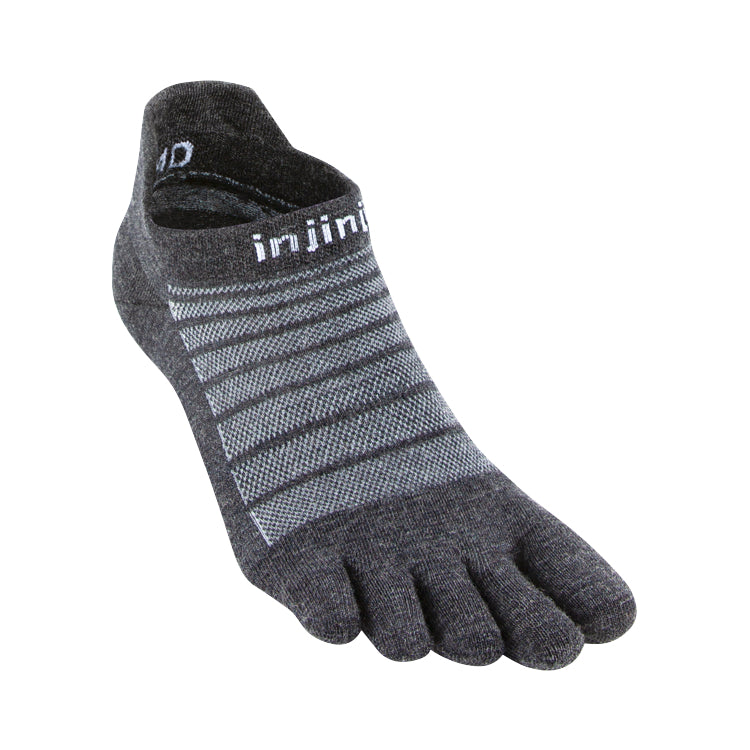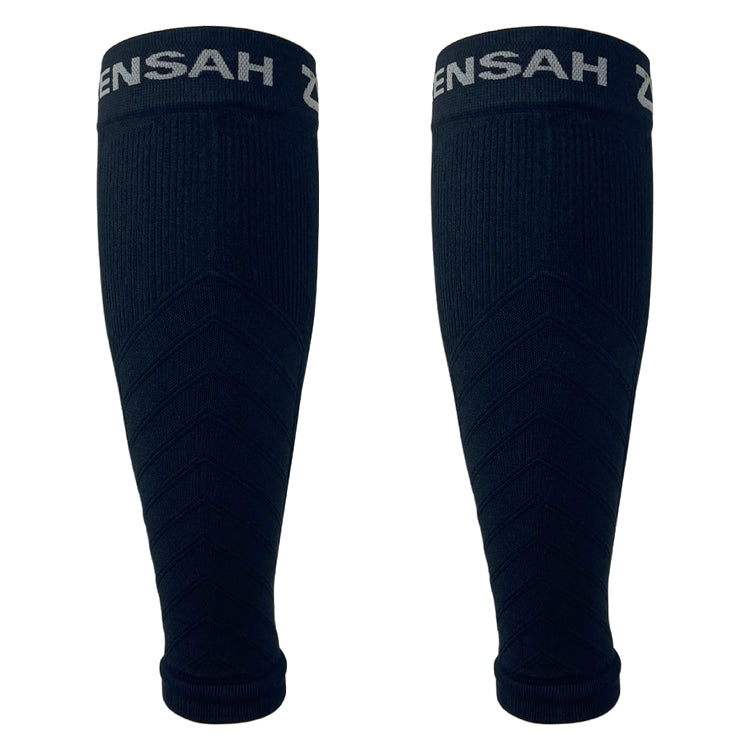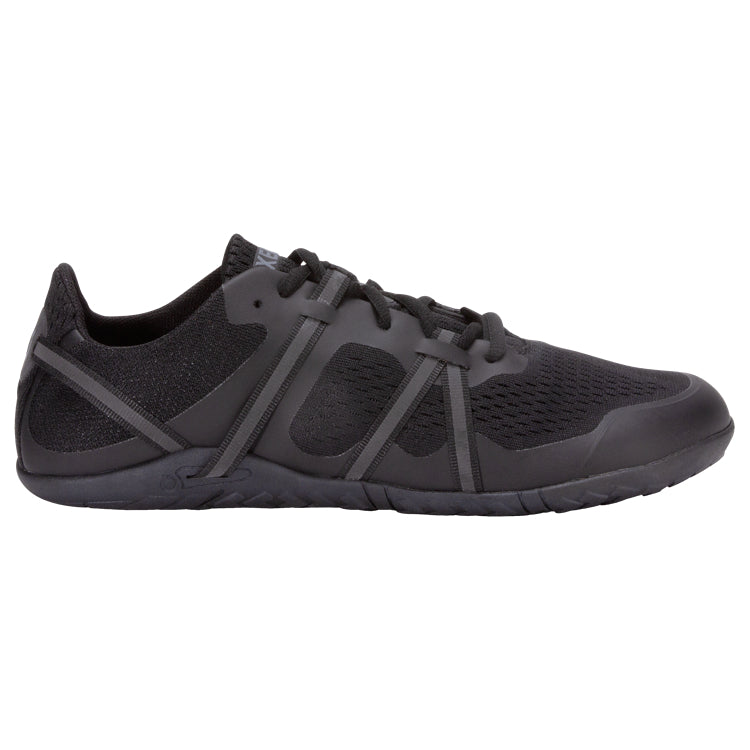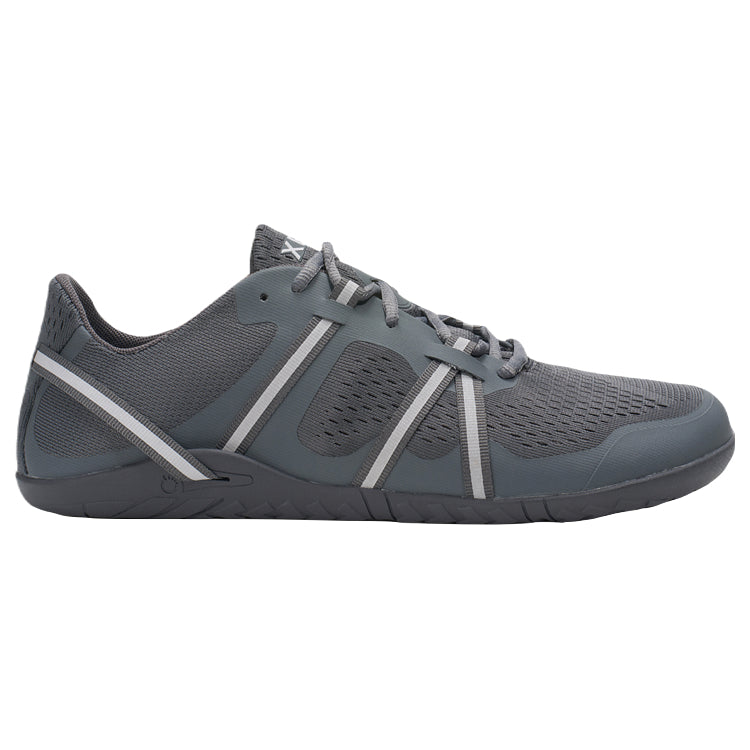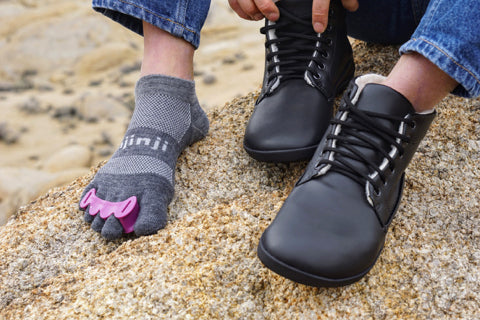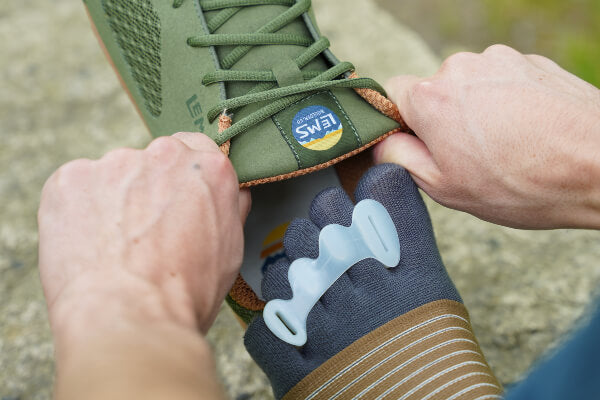
Shin splints is among the most painful lower leg problems experienced by athletes and active individuals.
The pain associated with shin splints is caused by a disruption of Sharpey’s fibers—collagenous fibers that connect lower leg fascia to the tibia’s periosteum. The impact forces that occur during repetitive stress (especially when using poor footwear) cause excessive pulling on these fibers, which leads to irritation of the periosteum and shin splints. This problem is compounded when running uphill, downhill, on hard surfaces, or on uneven terrain.
Shin splints may self-resolve, though this problem is likely to recur if the underlying factors that cause it are not dealt with in a timely and appropriate manner. In our experience, the main cause of shin splints is inappropriate footwear. That is, shoes that possess tapering toe boxes, an elevated heel, toe spring, and rigid, inflexible soles. Indeed, shin pain is often directly related to the feet and footwear, though it’s not always an obvious or intuitive connection.
Treatment for shin splints falls into two distinct categories: Acute (i.e., immediate) and long-term.
Acute treatment measures may include: Rest, taping, elevation, heat application, massage therapy, foam rolling (avoid foam rolling if your shin pain is due to stress fractures), and gentle stretching of your Achilles tendon and anterior lower leg muscles. Also, revising your training methods (i.e., temporarily reducing the intensity of your workouts or the amount of hill work that you’re doing, or running on softer surfaces such as grass or trails) is another important consideration.
In our experience, we’ve found the following long-term treatment measures to be most effective in addressing and preventing shin splints:
- Restoring natural toe splay through the use of Correct Toes toe spacers (the splayed toe configuration enabled by Correct Toes encourages a lower-impact gait pattern, which in turn reduces stress on the periosteum)
- Wearing men’s or women’s foot-healthy footwear (i.e., footwear that’s shaped like a natural foot) and adopting key gait changes that minimize impact forces on the body
- Wearing compression socks during activity
- Using metatarsal pads (metatarsal pads help spread the transverse foot arch, bring the toes closer to the ground, restore muscle/tendon balance in the foot and lower leg, and encourage proper weight distribution across the entire foot, including the toes)
- Adopting an appropriate training plan (i.e., a plan that gradually ratchets up training volume and intensity)
- Performing key stretches (especially the Toe Extensor Stretch) before and after physical activity
- Performing ankle and calf strengthening exercises
If you want to learn more about shin splints, including the difference between conventional and natural approaches to treatment and prevention, please check out this insightful video.

WANT TO IMPROVE YOUR FOOT HEALTH?
Let the team at Natural Footgear help you! Subscribe to our newsletter for the latest offers and helpful info, and sign up for our FREE email courses on various topics and foot health conditions.
Sign Up →
Want to Improve Your Foot Health?
We are here to help you every step of the way. Get our newsletter for the latest offers and helpful info, and sign up for our FREE email courses on various topics and conditions, including bunions, hammertoes, neuromas, plantar fasciosis, shin splints, ingrown toenails, and more.
Sign Up →
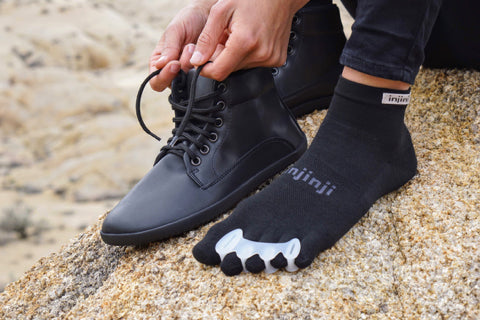 The Natural Footgear team receives lots of messages each day from folks around the world who want to know more about natural foot health and the products we offer. One of the most common questions we receive involves hiking footwear. Specifically: “Can I benefit from minimalist footwear & toe spacers when hiking?” Giving serious consideration to your hiking footgear is crucial in ensuring a comfortable and injury-free trek. Indeed, the...
Read more
The Natural Footgear team receives lots of messages each day from folks around the world who want to know more about natural foot health and the products we offer. One of the most common questions we receive involves hiking footwear. Specifically: “Can I benefit from minimalist footwear & toe spacers when hiking?” Giving serious consideration to your hiking footgear is crucial in ensuring a comfortable and injury-free trek. Indeed, the...
Read more



